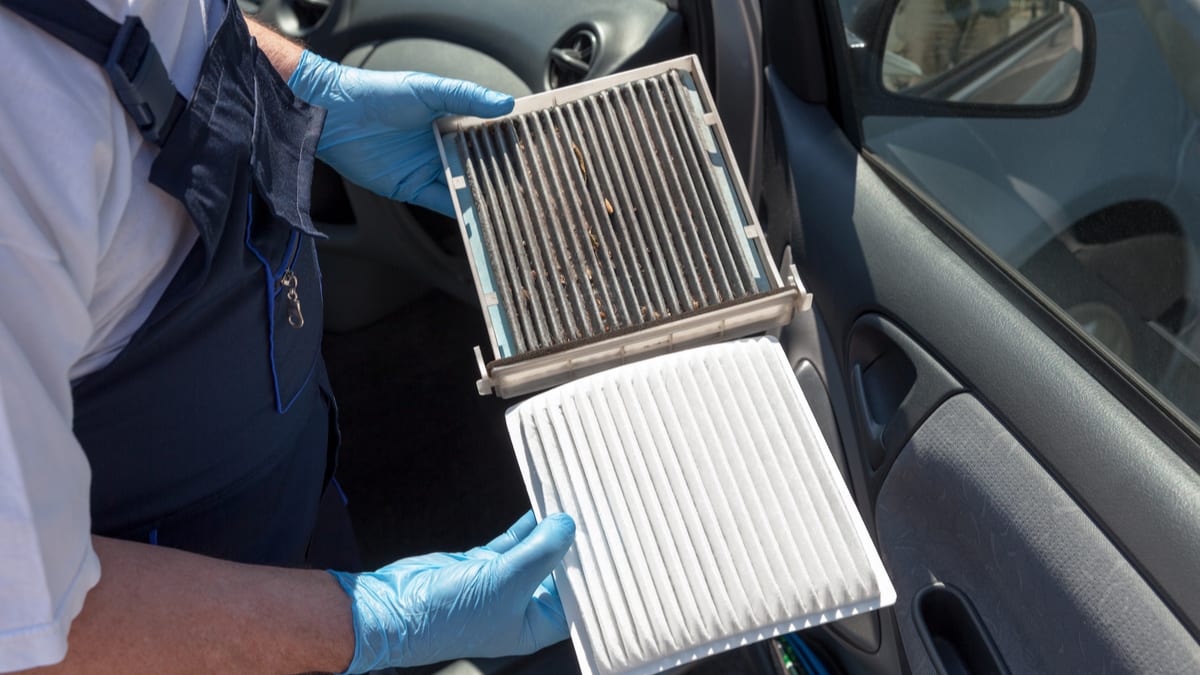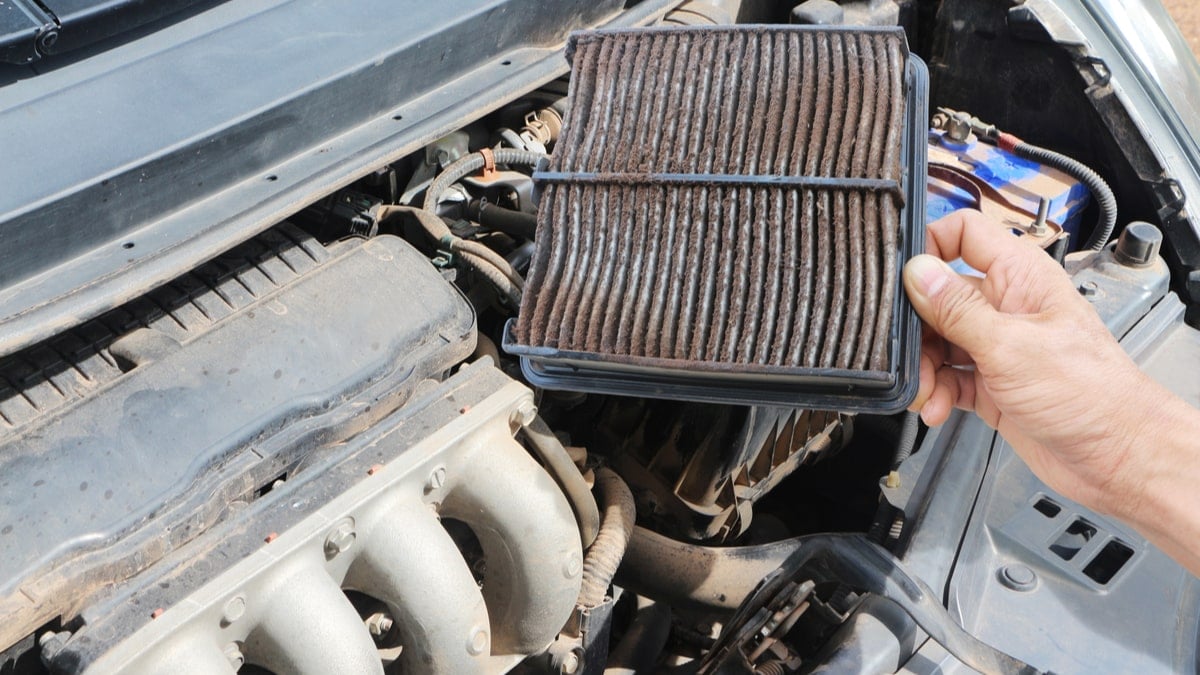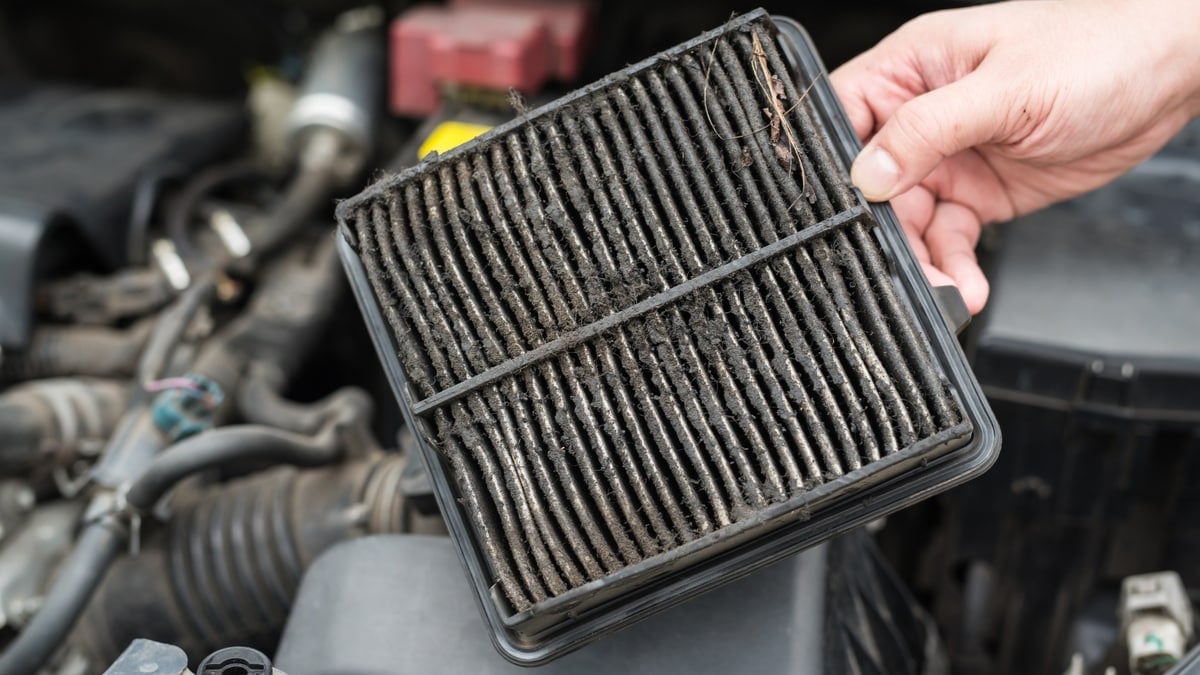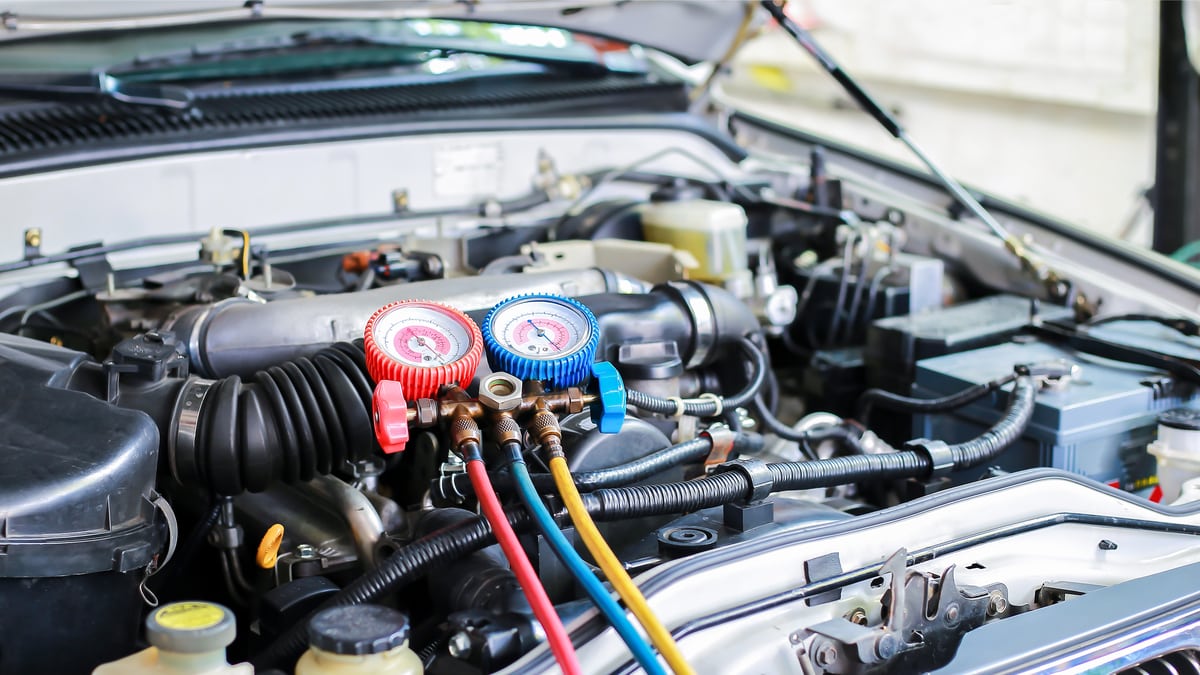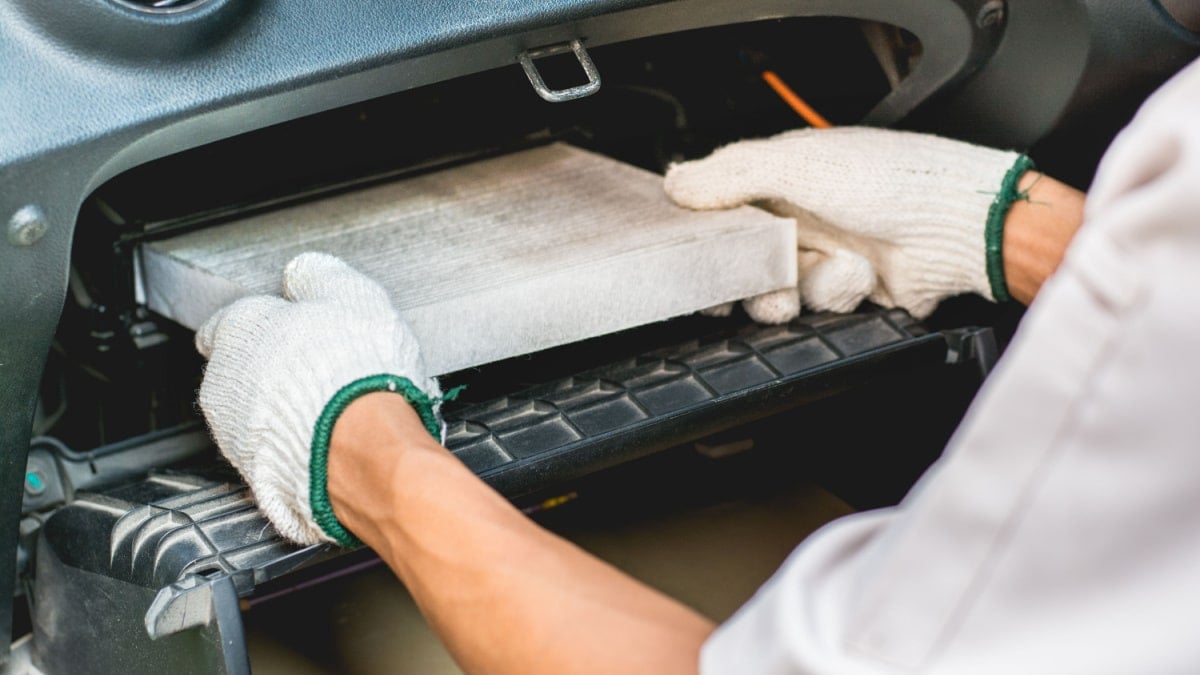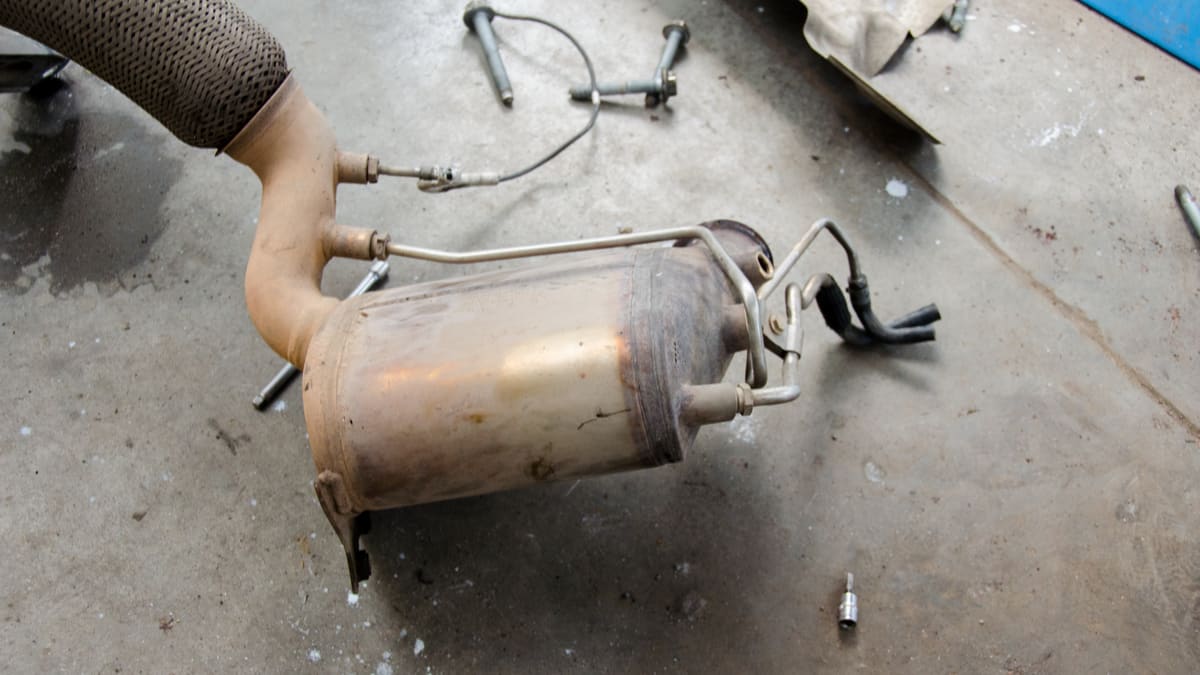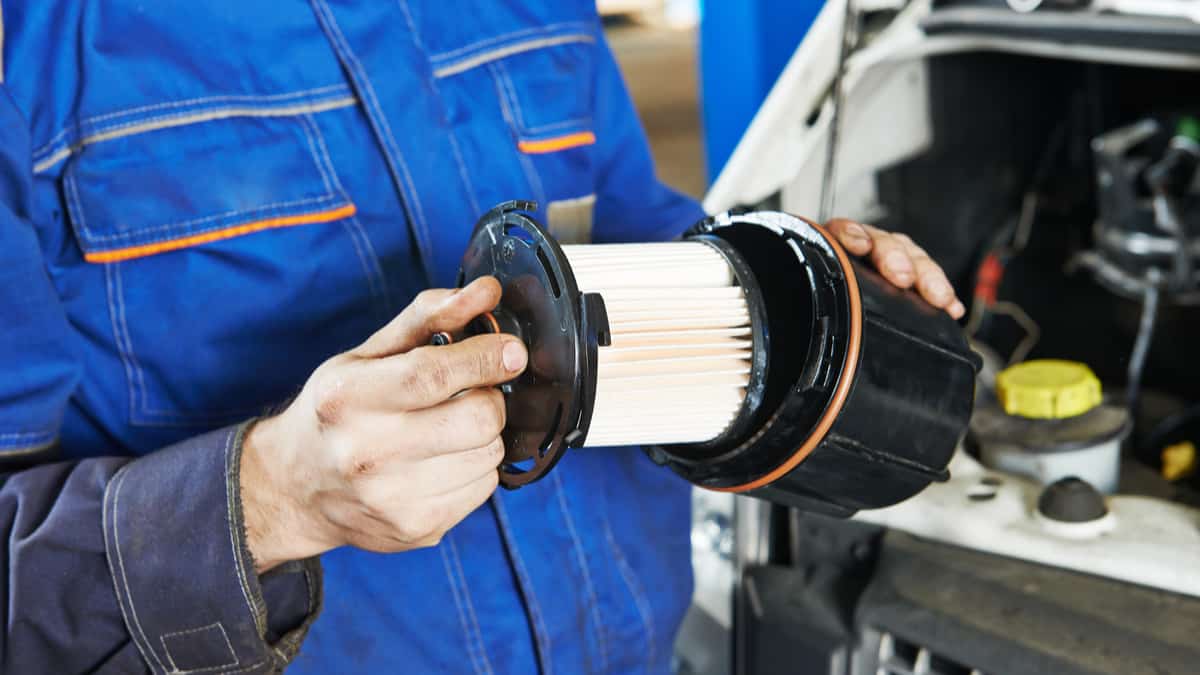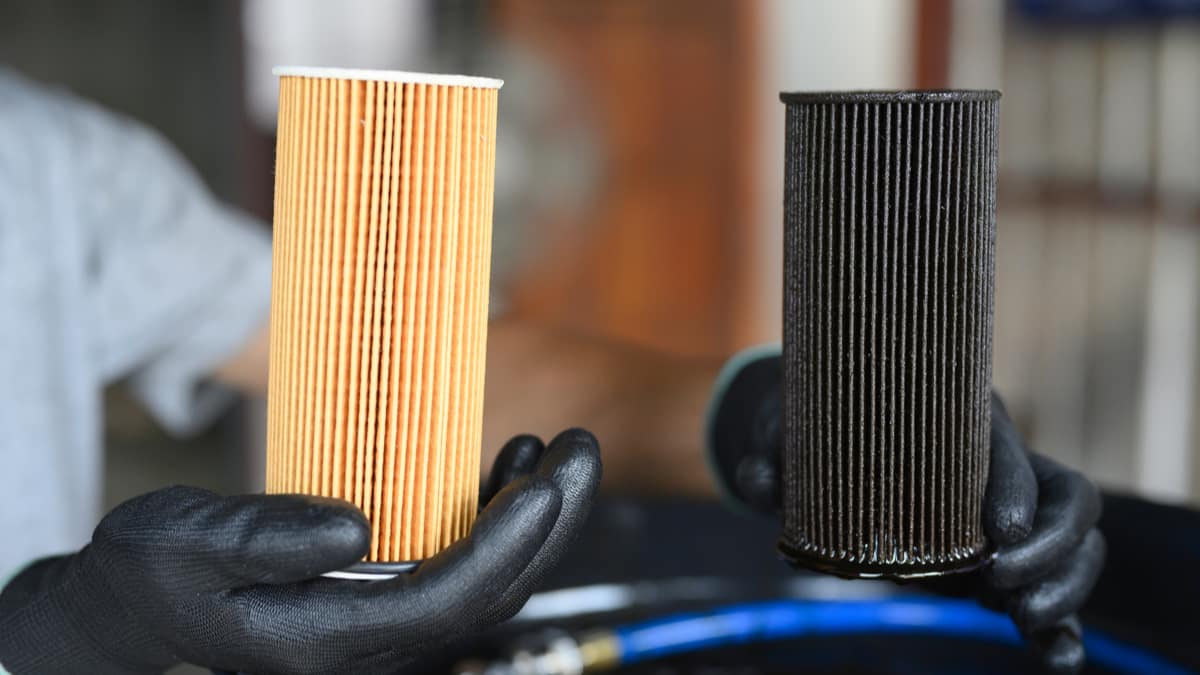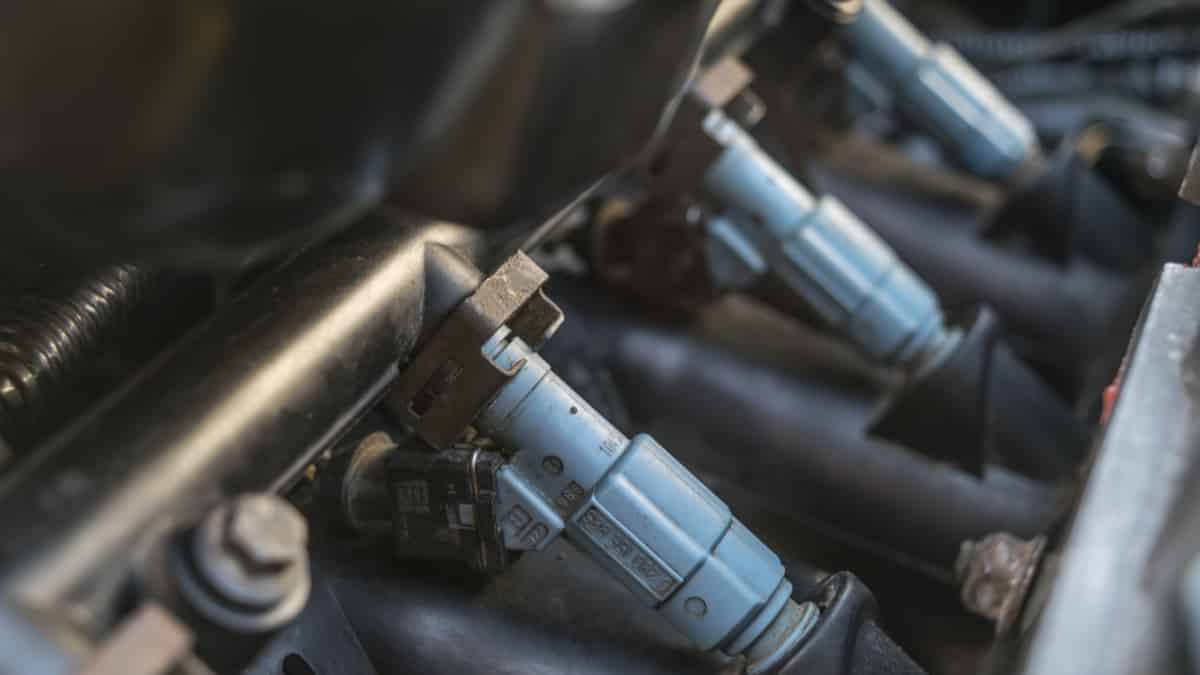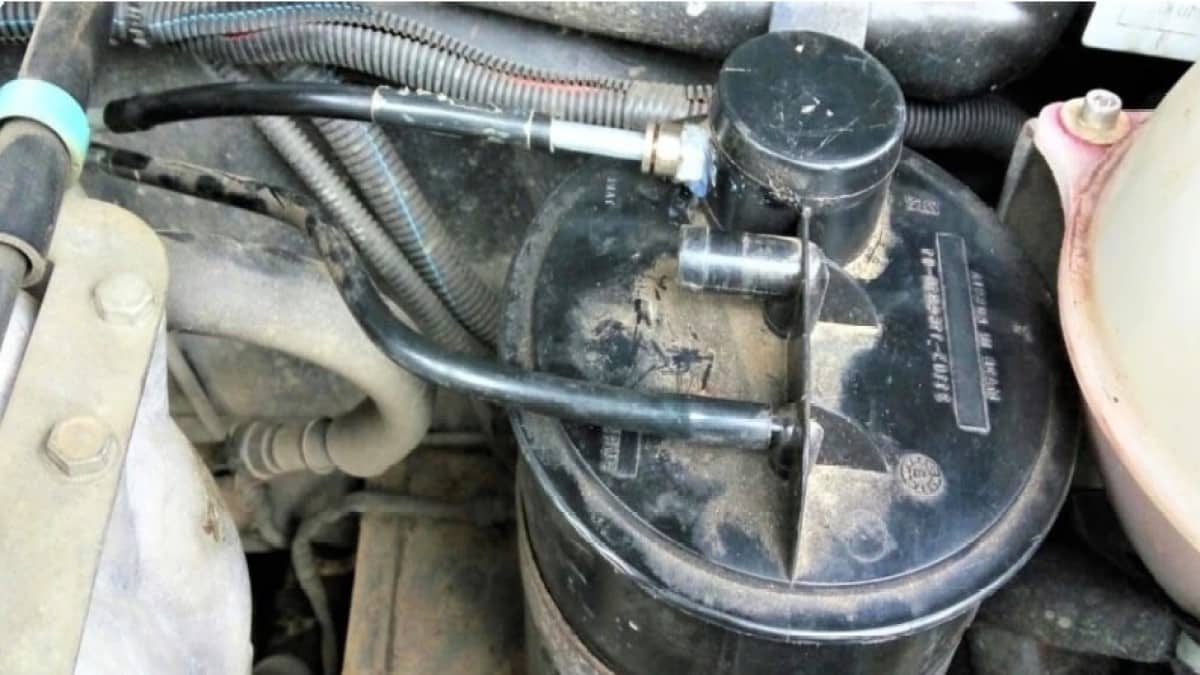Few people talk about the cabin air filter, even though it’s something that should be changed as part of the recommended maintenance schedule. If you aren’t following the schedule and changing it regularly, it’s best to know about the bad cabin air filter symptoms.
By paying close attention, you’ll know when this part needs to be replaced. You can quickly improve the quality of the air in the cabin with this simple task.
In this guide, we cover the symptoms of a bad cabin air filter and discuss its purpose. We also look at where it’s located and show you how to replace it before we answer your top questions.
Symptoms Of A Bad Cabin Air Filter
As the cabin air filter becomes clogged and contaminated, there will be a strange odor from the vents and decreased airflow. It also causes icy or foggy windows, increased fan noise, allergy symptoms and trouble with the heating and air conditioning system. If not repaired, further damage can occur.
Let’s dive deeper into these symptoms.
1. Bad Odor From the Vehicle’s Vents
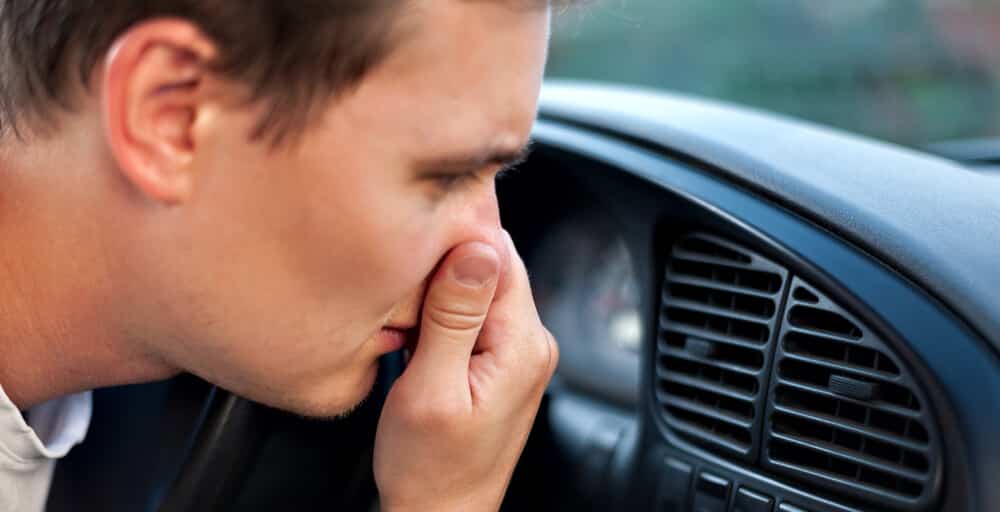
If your car suddenly smells like a gym locker or sweaty socks, there could be an issue with the filter. It can also cause a musty or moldy smell.
When the filter becomes contaminated, a musty smell starts to flow out of the vents. If you turn the airflow up, the smell will get stronger. The smells can get bad enough to keep you from wanting to drive in the car.
Even if you take steps to remove smells from the car, your efforts will be in vain until you replace the cabin air filter. Even after it’s replaced, it can take some time until the smells disperse.
2. Poor Airflow From the Vents
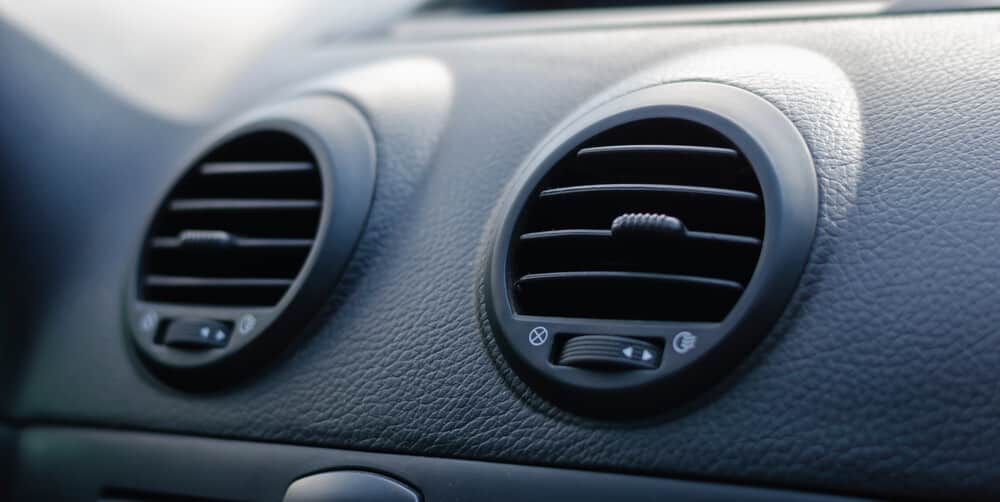
This may be the very next symptom you’ll notice, along with the smell. As the filter gets clogged, air can no longer pass through freely. The airflow decreases, even when you turn the system all the way up.
Not only will this restricted flow cause you to receive less air, but it can put a lot of stress on the climate control system. Continuing to use it this way can cause other failures, which are more costly to repair.
3. Foggy or Icy Windows
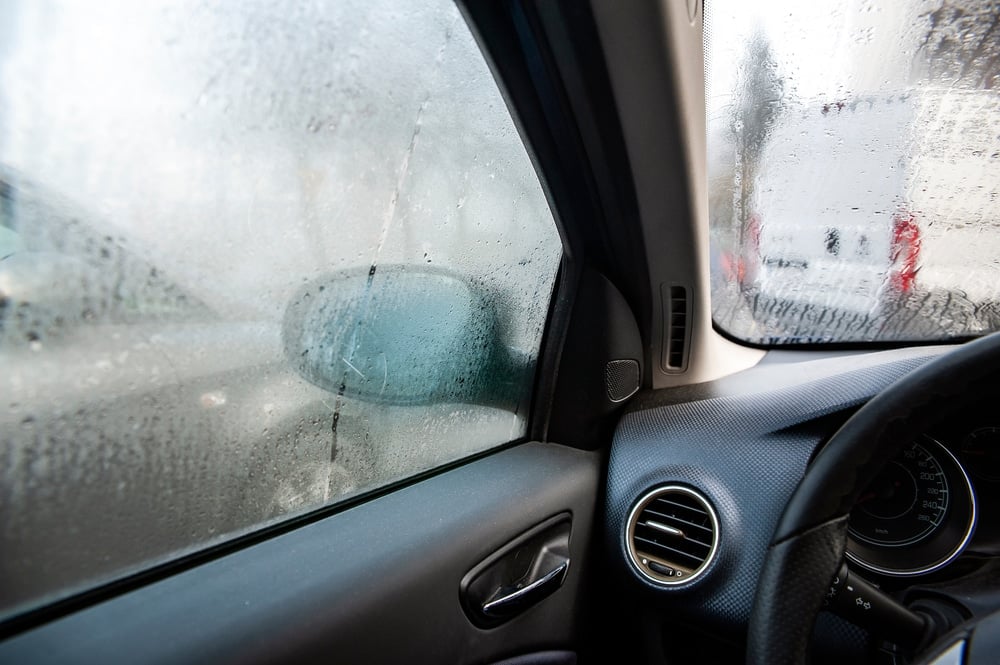
Part of what the cabin air filter is used for is to maintain proper airflow in the vehicle. This airflow is needed when the windows get foggy. Without it, there’s little chance of clearing up the windows, which hinders visibility.
If you can’t utilize the defrost system or it doesn’t blow hard enough, you can wipe off the condensation yourself. However, this is a challenging task to do when you are driving. If you can’t see out of the windows, you are at a higher risk of causing an accident.
When the cabin air filter is old and dirty, it will also collect moisture, which will cause foggy or icy windows when the car is parked.
4. Increased Fan Noise
As you drive, you are used to hearing the faint hum of the AC system. You know what sounds normal, so as it gets louder, you are bound to be alarmed. Any strange noise should be looked at immediately, especially because it might be something larger than the filter that’s wrong.
However, if the filter is to blame, it’s due to the larger particles that have infiltrated the system. As these particles clog up the filter, air can’t pass through and more noise is created.
5. Problems With the Heating or Cooling System
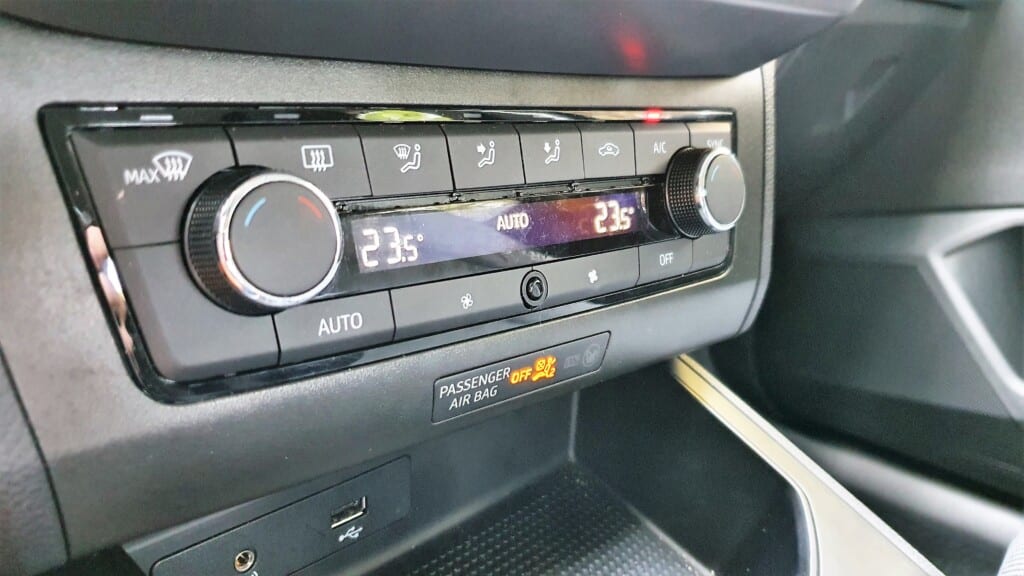
With the reduced airflow, it’s impossible for the heating and cooling system to do its job. On a hot summer day, you will have a hard time getting the cabin cold. The same is true when it’s cold outside. Trying to achieve a warm cabin with restricted airflow can be difficult.
The added stress that this puts on the AC and heater can take a toll on the system. If you don’t change the filter soon, you could find more damage done.
6. Allergy Symptoms
One of the purposes of the cabin air filter is to reduce in-cabin contaminants. If the filter becomes clogged, no further contaminants and allergens can be reduced.
If you are someone that struggles with allergies, you are going to notice the difference. You may start to exhibit respiratory ailments as the filter gets dirtier. Even if you don’t normally struggle with these problems, the allergens can start to bother you because of the small space you are in.
Cabin Air Filter Function
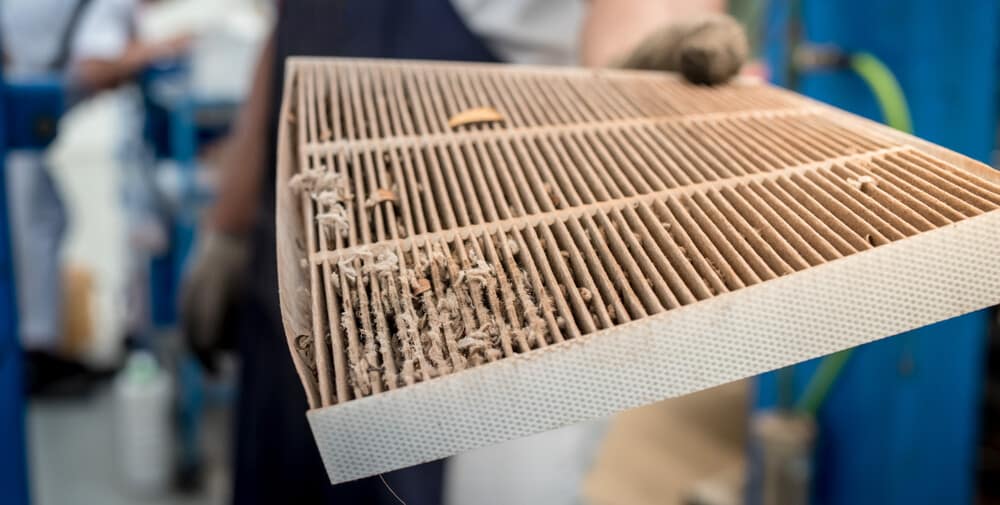
According to the American Lung Association, the air in the vehicle often contains several types of pollutants. These pollutants include the following:
- Traffic emissions: Air pollution gets into the vehicle from outside in the atmosphere. It comes in through the open windows and air vents. Exhaust fumes contain dangerous pollutants, such as volatile organic compounds (VOCs), carbon monoxide, particulate matter and nitrogen oxide.
- Internal pollutants: Inside the cabin, there are pollutants from the materials, including the adhesives, lubrications and plastics. Cars also give off carcinogens as they age, such as formaldehyde and benzene. Any moisture in the vehicle can also lead to mold growth.
- Occupants: Every person entering the vehicle can also bring in pollutants. The chemicals used in personal care products travel around the cabin. Additionally, if a passenger is a smoker, those pollutants are also in the vehicle.
The main purpose of the cabin air filter is to reduce these contaminants in the car. The filter can reduce the allergens, including pollen and dirt. These pollutants sit on the filter media instead of being pumped out through the car vents.
The filter in the car operates similarly to that in your household HVAC system. As air travels through, it catches the contaminants passing through. However, it also needs to be changed frequently, just as your household filter does.
Cabin Air Filter Replacement Interval
Every vehicle features a different maintenance schedule, so it’s important to look in your owner’s manual for a better answer. However, most manufacturers recommend changing the cabin air filter every 15,000 to 30,000 miles or every year.
If you pull out the filter and it looks clogged sooner, go ahead and change it. For the cost, it only makes sense to keep a fresh cabin air filter in the vehicle.
Where Is The Cabin Air Filter Located?

In the majority of cars, the cabin air filter is located behind the glove box or under the windshield. You can check the owner’s manual to find the location and steps to remove it. You shouldn’t need more than a screwdriver to remove the cabin air filter.
Keep in mind that some vehicles have multiple air filters. This configuration is often found in luxury models.
In most vehicles, these are the steps to change the filter.
- Locate the cabin air filter.
- Remove the glove box by pushing the appropriate buttons. Not all vehicles require the removal of the glove box.
- Take note of how the cabin air filter sits, so you can put the new one in the same way.
- Take the filter out and clean up any debris left behind.
- Vacuum the area well to remove any remaining dirt.
- Put in the new filter. Take note of the arrows on the filter, showing which way it should go in.
- Put back the glove box, if needed.
That’s it. For most cars, even the most inexperienced driver can change the cabin air filter. Because there’s very little that could go wrong, you could also teach your teenage driver how to do it. Consider it a cost of driving the family vehicle.
How Much Does It Cost To Replace A Cabin Air Filter?
If you want to have the cabin air filter replaced professionally, you may spend $65 to $100. Most air filters only cost $20 to $45, leaving the rest of the fee to labor.
If you can change the filter on your own, it’s worth doing. For a job that takes 15 minutes or less, you could save anywhere from $45 to $80 on labor charges. Otherwise, you can have the service performed during a regular tune-up to bundle the costs with other services.
Does changing the cabin air filter make a difference?
Yes, as pollutants and allergens build up on the cabin air filter, you will notice more respiratory problems in the car. Plus, a clogged filter is going to lead to a decline in heating or air conditioning performance. You may also notice strange smells from the vents that make the drive unpleasant.
What happens if you don’t change the cabin air filter?
If you don’t change the filter regularly, you’ll notice odd smells coming from the vents. The air and heating may also be hindered. Additionally, pollutants and allergens will no longer be filtered out, causing allergic reactions to you and the passengers, especially if you are already dealing with respiratory problems.
Will a dirty cabin filter affect the AC?
Yes, when the cabin air filter becomes clogged, the air cannot flow as it is supposed to. The air conditioning system has to work harder and there won’t be as much air coming out of the vents. Additionally, the air that does come out could smell bad and have allergens in it.
Can I drive around without a cabin air filter?
There’s nothing stopping you from driving a car without a cabin air filter. It’s not going to stop the engine from running normally. However, debris can get into the climate control system when there’s no filter, so damage to this system could occur. You also won’t have any allergen protection with the filter out.
Is a cabin filter easy to replace?
Yes, most vehicles provide access to the cabin filter through the glove box. With a screwdriver, you can take the old cabin air filter out and replace it with a new one. In total, this replacement should take 15 minutes or less. By doing so, you save money on professional labor fees.
As mechanics, there are some maintenance tasks that we can now perform with our eyes shut. Changing the cabin air filter is one of these tasks, but it doesn’t make the replacement any less important. Despite being simple, there are valuable reasons why you should change the air filter at the appropriate time.
It doesn’t matter if you are driving to work, taking the kids to school or traveling for work, you want the car’s cabin to smell its best. You also don’t want to deal with allergens or other contaminants that could make you sick. For these reasons alone, it’s critical to change the air filter. Aside from that, you also need to change it to ensure that the air conditioner and heater continue to work as designed.
Categories: Air condition, Maintenance
